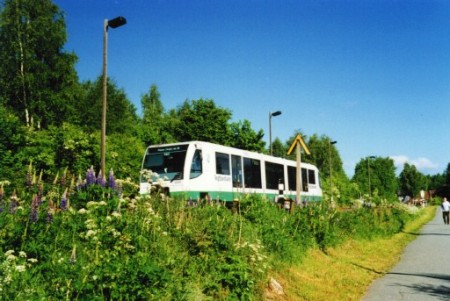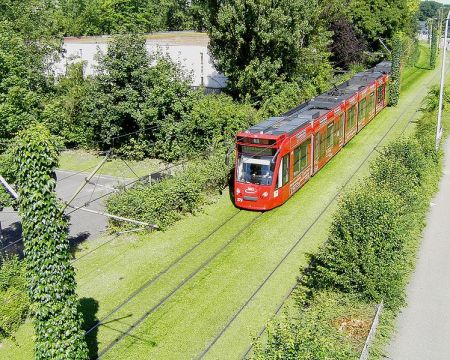TransLink is at it again, playing brinkmanship with regional mayors and I hope the valley politicos see through this tawdry charade, which has become a cliché for TransLink’s haphazard planning efforts.
But here’s the trick, you got to play TransLink’s game because provincial transportation minister, Shirley Bond insists that regional mayors do play. Some regional mayors, including Fassbender from the City of Langley are acting the part of the country rube, easily outwitted by TransLink’s hucksters selling financial snake oil.
TransLink is in deep financial trouble, yet it plans more expensive metro lines; BRT, a transit mode with a poor record in attracting ridership; community buses, which mostly run empty; and continuing with the $1.00 a day U-Pass, a heavily subsidized student fare which clogs up buses and fills metro cars, leaving transit customers who pay full fare standing or just taking the car instead! To pay for this nonsense, the regional taxpayer is once again going to be forced to pay for really amateur transit planning, done by a bureaucracy which cares more about their perks and pensions, than planning for an affordable and accessible public transit system.
So here is the Zweisystem solution for transit funding. Let the municipalities with SkyTrain, pay for SkyTrain and the municipalities who have only bus operation, pay only for bus operation. As SkyTrain and light-metro financing so dominate TransLink’s balance sheet, the cities with one or more light-metro lines should pay more for SkyTrain and associated improved bus operations.
This simple formula, taxes those municipalities and cities who benefit from light-metro and trolley buses and provide an incentive for taxpayers to insist getting the biggest bang for their buck!
Property tax hike for transit only choice before mayors
By Jeff Nagel
Local mayors will not be asked to vote on imposing a vehicle levy to fund transit expansion – at least not this year.
Instead, the only option to finance the Evergreen Line and possibly other transit improvements will be an increase to property taxes.
If approved, a typical $600,000 home will pay $31 in increased tax to raise $465 million for TransLink’s share of the $1.4-billion Evergreen SkyTrain line to Coquitlam and the first phase of the North Fraser Perimeter Road.
Mayors council chair Peter Fassbender said it was too late to contemplate the Transportation Improvement Fee, a levy which would have raised the same amount of money by charging $15 to $55 per registered vehicle each year, depending on their carbon footprint.
“It would require legislative change, administrative changes and a number of elements for that to even be considered,” the Langley City mayor said of the vehicle levy.
“And it’s going to get significant pushback from south of the Fraser.”
Metro mayors meet Tuesday (Nov. 9) to be briefed on the proposed financial supplement for TransLink, which still has to be assessed by the independent TransLink commissioner before it goes to a vote on Dec. 9.
But Fassbender is still hopeful a scenario is possible where the mayors are able to negotiate different TransLink funding sources with the province, in line with an accord struck in September.
In essence, he thinks the property tax hike could be voted in now to satisfy the provincial government’s insistence of funding certainty for the Evergreen Line, which breaks ground next year.
But Fassbender notes the extra revenue from TransLink won’t be needed until 2012.
That means a property tax lift pencilled in now could be erased next year if Victoria agrees to provide alternative sources – such as road pricing, a share of carbon tax or even the vehicle levy – which could flow by 2012.
“Can this get us far enough down the road that it gives us time to find other solutions?” Fassbender asked, referring to temporary approval of a property tax hike.
“If we can take pressure off one way or another so we have some breathing space, let’s do it.”
That scenario would require trust – several other mayors fear no such deal with the province may be forthcoming once they sign off.
Transportation minister Shirley Bond has also hinted the government may take unilateral action to ensure TransLink raises the money if mayors vote down the supplement.
Then there’s the resignation of the premier and the ensuing Liberal leadership race that clouds the political landscape and will distract some of the players.
Fassbender said even that could work in favour of a deal.
“We’re in a very interesting time because of the changes,” he said, suggesting the government and leadership contenders will likely want to preside over good news, not discord.
More time to negotiate would provide a better chance to consider the how to implement something like the vehicle levy, he said, noting there’s been talk of options like adjusting the rate depending on the level of local transit service.
Fassbender said TransLink’s plan to introduce smart card payment will also open up intriguing options like rebating vehicle levy or road pricing fees collected back to motorists in the form of transit credits, encouraging them to switch modes some of the time.
“When you pay that fee you get an equivalent amount of transit fares built into that card,” he suggested. “That way we not only raise revenue but also help to shift behaviour.”
Mayors will also have the option to vote on a larger set of transit upgrades, including bus service increases and various SkyTrain station upgrades. That would cost an additional $338 million, lifting the property tax hit to $54 for a typical home.
PROPOSED TRANSLINK INVESTMENTS
OPTION A:
Evergreen Line – $412 million
(TransLink capital contribution, bus and facilities integration, wayfinding and Broadway-Commercial station)
North Fraser Perimeter Road phase 1 – $53.2 million
(United Boulevard extension)
OPTION A TOTAL: $465.3 million, requiring $39 million per year
PROPERTY TAX IMPACT: $31 per $600,000 home or $5.20 per $100,000 value.
OPTION B:
Bus service boost to accommodate U-Pass expansion: $85.1 million
Bus service boost to meet minimum service standards: $51.3 million
Highway 1 Bus Rapid Transit: $40.9 million
(Linking Lougheed Station- Surrey Central-Walnut Grove with buses every 10 mins)
Minor Road Network minor capital: $37.9 million
Bus service boost to keep pace with population growth: $36.7 million
Cycling projects: $17 million
Main Street Station upgrade: $16.3 million
Metrotown Station upgrade: $12.9 million
King George Boulevard B-Line Bus service: $12.6 million
New Westminster Station upgrade: $9.2 million
White Rock to Langley bus service: $7.5 million
(community shuttles every 30 mins)
Surrey Central Station upgrade: $5.9 million
Lonsdale Quay upgrade: $4.2 million
TOTAL FOR OPTION B: $337.6 million
TOTAL OF OPTIONS A + B: $802 million, requiring $68 million per year
PROPERTY TAX IMPACT OPTIONS A + B: $54 per $600,000 home or $9 per $100,000 assessed value









